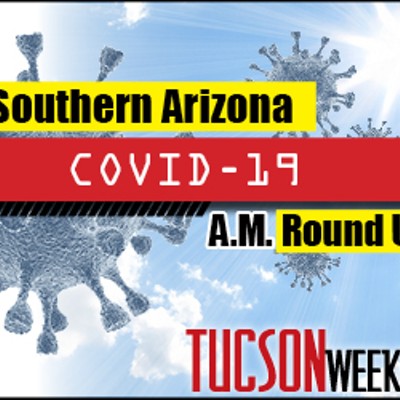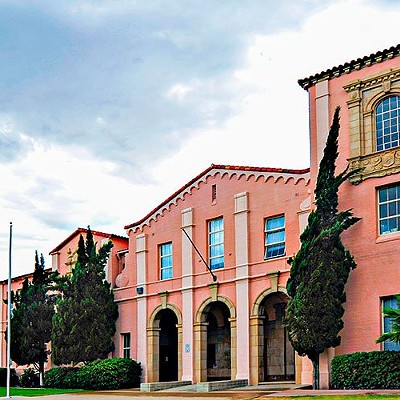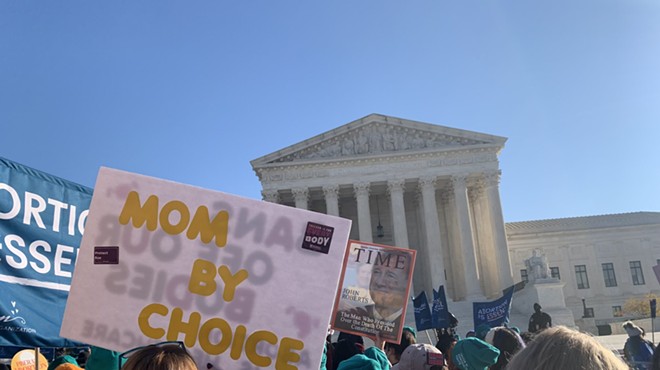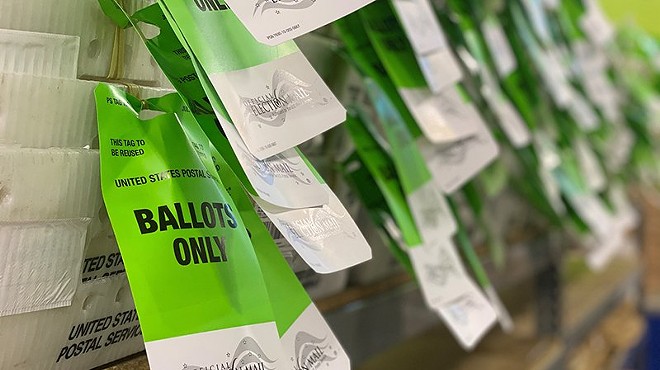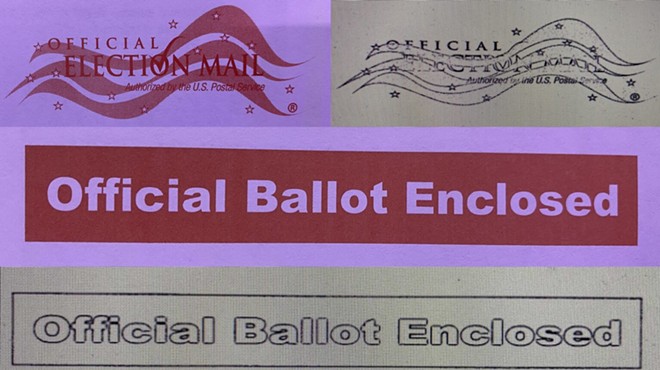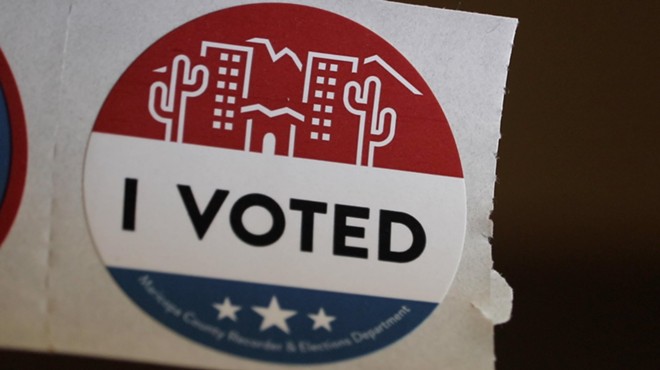Thursday, March 3, 2016
A Look at TUSD's Classroom Spending Numbers
Yesterday I took a look at the amount of money that goes into the classroom in Arizona school districts in general. Today I'm taking a look at TUSD's numbers.
The Auditor General's Report of Arizona School District Spending for Fiscal Year 2015 has a two page spread for every school district in the state. The layouts are all the same, the only thing that changes are the numbers for each district. The TUSD numbers are on pages 392 and 393 if you want to look them over yourself.
The big pie graph, top left, shows the percent of the total district budget spent in various categories. The biggie is Instruction, the classroom component, which is at 48.7 percent for TUSD, well below the state average of 53.6 percent. The rest of the money is spread out over six categories: Administration, Plant operations, Food service, Transportation, Student support and Instructional support. On the second page is a graph showing how the spending percentages changed for the seven categories since 2001. In 2015, TUSD's Administration and Food services spending end up close to where they were in 2001, and the other four non-classroom categories are up between one and two percent. Classroom instruction, on the other hand, is down five percent.
Bottom line, TUSD should spend more in the classroom, no question. Why is the Instruction percentage down since 2001 while other areas either stayed even or increased? It's easy to use those numbers to condemn TUSD for its overall awful-ness or give reasons and rationalizations to explain the numbers. Instead, I want to ask, "Compared to what?" How do TUSD's numbers compare to what other districts are doing?
Each district is compared to what's called a "Peer average," and TUSD doesn't look good in the comparisons. Unfortunately, unless I missed something, the report doesn't name the "peer" districts. If I'm right that the "peers" aren't listed, we're relying on some formula the auditors used without knowing what it is. That being said, TUSD's "Peer average" districts put 56.5 percent of their budgets into instruction, three percent higher than the state average and eight percent over TUSD. Why, or how, are those districts devoting so much more to Instruction? Maybe they're doing a better job with their students than TUSD. Maybe they're better money managers. Or maybe their situations are different enough to explain some of the disparities. Without knowing the districts, I don't have the answer.
I created a head-to-head comparison between TUSD and Catalina Foothills district to see what I could learn from two known local quantities. Cat Foothills is on pages 88 and 89 of the report if you're following along. I chose Cat Foothills before I looked at its numbers, because it's a local district that's on the other end of the school district continuum from TUSD. Unlike TUSD, it's one of the highest performing districts in the state, it has a high income population and its facilities are reasonably new. So how do the percentages stack up? I put them in the table below.
Cat Foothills puts almost six percent more of its budget into instruction. That means it has to spend almost six percent less on the rest of its budget. So where does it save money? Not in Administration, where Cat Foothills spends almost two percent more than TUSD, which may come as a surprise to people who think that TUSD is a big administrative spender. Cat Foothills spends about two percent less on Food services. Whether that's efficiency or the fact that it has fewer students on free/reduced lunch and/or more students who don't eat school food, I can't say. Cat Foothills saves another two-and-a-half percent on Transportation. Whether that's greater efficiency or a function of a newer bus fleet, shorter transportation distances and/or more of its students getting to school using private transportation, again, I can't say.
Student support is a big difference. TUSD spends almost three-and-a-half percent more than Cat Foothills in that category. If you add Student support to both districts' Instruction budget, the difference between the districts shrinks from six percent to a little over two percent. It's not hard to understand why TUSD's student population would be more in need of support outside the classroom than the more socioeconomically advantaged students in Cat Foothills. It's reasonable to say that TUSD's support services are necessary for its classroom instruction to be effective.
Cat Foothills spends one percent more on Instructional support, which, so far as I know, is staff training in teaching strategies and curriculum.
Let's look at the Cat Foothills second page graph on how its spending has changed since 2001, which I discussed earlier for TUSD. Cat Foothills' Instructional support had the biggest gain—three percent—followed by Student support and Administration at two percent. Like TUSD, its Instruction percentage fell significantly. The biggest drop was in 2013 when it was down six percent, then it recovered in 2015 to a four-and-a-half percent drop. TUSD's Instruction percentage, remember, is currently five percent lower than it was in 2001, not much different than the change at Cat Foothills.
Why did a highly respected district like Cat Foothills cut the amount it spends on Instruction so drastically? I imagine the reason is the same as at TUSD and other Arizona districts. When the overall budget is being cut by the state, it's easier to keep teacher salaries down, increase class sizes and spend less on classroom textbooks and supplies than it is to lower fixed costs.
There's lots of room for interpretation of the information in the budget report. I spent more time here discussing the data than reaching conclusions. I imagine different readers will reach wildly different conclusions, which is fine. And anyone can do similar comparisons between districts if they wish. Just go to the report, look up a few districts—they're in alphabetical order—and do your own delving.
The Auditor General's Report of Arizona School District Spending for Fiscal Year 2015 has a two page spread for every school district in the state. The layouts are all the same, the only thing that changes are the numbers for each district. The TUSD numbers are on pages 392 and 393 if you want to look them over yourself.
The big pie graph, top left, shows the percent of the total district budget spent in various categories. The biggie is Instruction, the classroom component, which is at 48.7 percent for TUSD, well below the state average of 53.6 percent. The rest of the money is spread out over six categories: Administration, Plant operations, Food service, Transportation, Student support and Instructional support. On the second page is a graph showing how the spending percentages changed for the seven categories since 2001. In 2015, TUSD's Administration and Food services spending end up close to where they were in 2001, and the other four non-classroom categories are up between one and two percent. Classroom instruction, on the other hand, is down five percent.
Bottom line, TUSD should spend more in the classroom, no question. Why is the Instruction percentage down since 2001 while other areas either stayed even or increased? It's easy to use those numbers to condemn TUSD for its overall awful-ness or give reasons and rationalizations to explain the numbers. Instead, I want to ask, "Compared to what?" How do TUSD's numbers compare to what other districts are doing?
Each district is compared to what's called a "Peer average," and TUSD doesn't look good in the comparisons. Unfortunately, unless I missed something, the report doesn't name the "peer" districts. If I'm right that the "peers" aren't listed, we're relying on some formula the auditors used without knowing what it is. That being said, TUSD's "Peer average" districts put 56.5 percent of their budgets into instruction, three percent higher than the state average and eight percent over TUSD. Why, or how, are those districts devoting so much more to Instruction? Maybe they're doing a better job with their students than TUSD. Maybe they're better money managers. Or maybe their situations are different enough to explain some of the disparities. Without knowing the districts, I don't have the answer.
I created a head-to-head comparison between TUSD and Catalina Foothills district to see what I could learn from two known local quantities. Cat Foothills is on pages 88 and 89 of the report if you're following along. I chose Cat Foothills before I looked at its numbers, because it's a local district that's on the other end of the school district continuum from TUSD. Unlike TUSD, it's one of the highest performing districts in the state, it has a high income population and its facilities are reasonably new. So how do the percentages stack up? I put them in the table below.
Cat Foothills puts almost six percent more of its budget into instruction. That means it has to spend almost six percent less on the rest of its budget. So where does it save money? Not in Administration, where Cat Foothills spends almost two percent more than TUSD, which may come as a surprise to people who think that TUSD is a big administrative spender. Cat Foothills spends about two percent less on Food services. Whether that's efficiency or the fact that it has fewer students on free/reduced lunch and/or more students who don't eat school food, I can't say. Cat Foothills saves another two-and-a-half percent on Transportation. Whether that's greater efficiency or a function of a newer bus fleet, shorter transportation distances and/or more of its students getting to school using private transportation, again, I can't say.
Student support is a big difference. TUSD spends almost three-and-a-half percent more than Cat Foothills in that category. If you add Student support to both districts' Instruction budget, the difference between the districts shrinks from six percent to a little over two percent. It's not hard to understand why TUSD's student population would be more in need of support outside the classroom than the more socioeconomically advantaged students in Cat Foothills. It's reasonable to say that TUSD's support services are necessary for its classroom instruction to be effective.
Cat Foothills spends one percent more on Instructional support, which, so far as I know, is staff training in teaching strategies and curriculum.
Let's look at the Cat Foothills second page graph on how its spending has changed since 2001, which I discussed earlier for TUSD. Cat Foothills' Instructional support had the biggest gain—three percent—followed by Student support and Administration at two percent. Like TUSD, its Instruction percentage fell significantly. The biggest drop was in 2013 when it was down six percent, then it recovered in 2015 to a four-and-a-half percent drop. TUSD's Instruction percentage, remember, is currently five percent lower than it was in 2001, not much different than the change at Cat Foothills.
Why did a highly respected district like Cat Foothills cut the amount it spends on Instruction so drastically? I imagine the reason is the same as at TUSD and other Arizona districts. When the overall budget is being cut by the state, it's easier to keep teacher salaries down, increase class sizes and spend less on classroom textbooks and supplies than it is to lower fixed costs.
There's lots of room for interpretation of the information in the budget report. I spent more time here discussing the data than reaching conclusions. I imagine different readers will reach wildly different conclusions, which is fine. And anyone can do similar comparisons between districts if they wish. Just go to the report, look up a few districts—they're in alphabetical order—and do your own delving.
Tags: Arizona Auditor General's Report of Arizona School District Spending for Fiscal Year 2015 , TUSD , Catalina Foothills School District , Classroom spending



